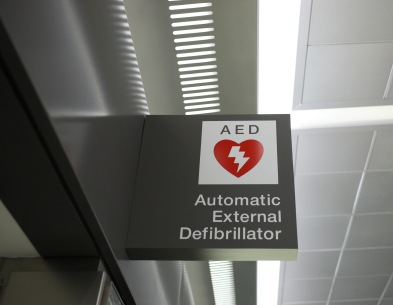School-based, public access defibrillation (PAD) programs saved the lives of nearly nine out of ten student-athletes and adults suffering sudden cardiac arrest (SCA) during physical activity on school grounds, reports a first-of-its-kind study of PAD in a school setting published in the British Journal of Sports Medicine. [1]
SCA is the leading cause of sudden death in young athletes during exercise. Historical survival rates from out-of-hospital SCA using conventional EMS systems are less than 8%. PAD programs have been shown to improve survival rates by shortening the time interval from cardiac arrest to defibrillation through strategic placement of automated external defibrillators (AEDs), with placement of AEDs in schools and at athletic venues now the "cornerstone" of emergency response planning and the prevention of sudden cardiac death in young athletes.

The study found that when the AED used in the resuscitation was brought by responding offsite EMS - which took an average of 7.8 minutes - only half of the SCA victims survived, but that if the defibrillator used was supplied by the school the survival rate for student-athletes who suffered SCA jumped to 80%. The survival rate for schools with an established emergency action plan was almost twice as high as schools without an EAP (79% versus 44%).
Our "study suggests SCA in students and student-athletes is largely a survivable event through prompt treatment and access to" an automated external defibrillator," writes lead author, Jonathan A. Drezner, MD, of the Department of Family Medicine at the University of Washington, and "provide compelling support for school-based AED programmes."
High survival rates
Drezner and his colleagues said the high survival rates were likely related to several factors known to increase the probability of survival from SCA:
- over 90% of cases were witnesses and received prompt CPR.
- 83% had an established emergency action plan for SCA
- school AEDs were readily accessible and used in nearly 70% of cases; and
- two-thirds of victims received defibrillation onsite.
He noted that even when the school's AED was not used in the resuscitation (ie, responding EMS provided the defibrillator), survival rates were reasonably high, which Drezner said "may reflect that school-based AED programmes predict other important determinants of survival and better overal emergency planning for SCA."
For support, he pointed to an earlier study he co-authored published in the American Journal of Sports Medicine [2] finding that schools with AED programmes were more likely to ensure access to early defibrillation, establish an emergency action plan for SCA, review the EAP at least annually, consult EMS in its development, and establish a communication to activate emergency responders.
That study reported that roughly 1 in 5 U.S. high schools did not have an AED, half of schools without AEDs did not have any EAP for SCA, less than half of schools with an EAP regularly reviewed and rehearsed the plan, and 1 in 5 high schools did not train their coaches in CPR.
"While there is a growing trend towards AED placement in schools," Drezner writes, "school-based AED programs are not yet a universal standard," with financial concerns cited as the primary obstacle. "Greater resource allocation towards emergency planning for SCA is needed to ensure widespread access to AEDs in the school setting. Given two-thirds of SCA on a school campus occurs at an athletic venue, prioritising AED placement to these locations should be considered if resources are limited."








